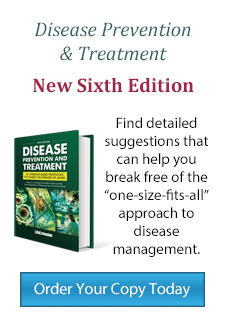When a person consumes too
much food, especially carbohydrates and
fat, than he actually needs to maintain his body mechanism and perform his
daily activities, the excess calories generated by this food is stored as fat. A person is considered
overweight when this fat is about 10% in excess of the ideal fat for his
height, and obese at over 20% excess. Obesity, the condition of being obese or
seriously overweight, is a common but serious nutritional disorder, affecting
the poor and rich alike.
Height
body fat.
8-20%
of body weight (men).
13-25%
of body weight (woman).
Indicators
of Obesity.
- Triceps Skin fold Thickness: The measurement of the fold of skin at the back of the upper arm (triceps) can be used to determine whether a particular person is too fat (obese), normal too thin. The standard triceps skin fold thickness for normal weight adult is 12.5mm for male and 16.5mm for female. Females are naturally expected to be fatter than males. Higher figures are indicators of overweight or obesity.
- Waist measurement: Waist measurement is a reliable indicator of how fat or thin a person is. A woman whose wait measures more than 40 inches are considered obese.
Types
of Obesity:
Obesity
is classified into two types depending on when it manifest.
Toddler/Juvenile Obesity (Lifelong
Obesity): This type of obesity starts in childhood. Some children are
overweight right from womb, causing their mothers to undergo caesarean section.
This is to say that obesity poses danger to life even at birth! In most cases,
especially where there is no concerted effort at reducing calories intake,
childhood obesity develops into adulthood and even become worse. This is
because the child grows up with higher number and sizes of adipose tissues capable
of storing more and more fat.click for more details on how to prevent underweight and obesity.
Children that are well fed in
infancy would maximize their potential for growth and fatness better than those
with little or no food. According to research, fat cells increase in number in
the first two years of life and again just before puberty (12-15 years).
Avoiding overfeeding children at these periods might reduce their potential for
obesity.
Readmore
Readmore
- Adult Onset Obesity: This is the type of obesity that starts in adulthood. It is provoked by overfeeding or over indulgence in foods containing a lot of carbohydrates and fat; though the individual may have the genetic potential for it right from birth. An example is a skinny girl at 15 or 18 years who suddenly becomes fat and obese at 25 or 30 years after experiencing a change in status with improved economic and nutritional levels.
·
Fat Distribution
There is no human
being without adipose tissues or fat cells. The role of fat in the body is very
critical to life; that is, no fat, no life. Therefore, what we are talking
about is not the total examination of excessive, unhealthy fat.
Fat are not
evenly distributed throughout the body. Some parts of the body are natural
locations for fat. These parts include the abdomen, the trunk (chest region),
buttocks, thighs, hips, waist, cheeks, breast, calves, arms (especially the top
parts) and nape of the neck.
Overweight or
obese people two main patterns f fat distribution, with several shades in
between. These two main patterns are: apple-shaped fat distribution(6.1) and
pear-shaped fat distribution (6.2).
In the
apple-shaped fat distribution, fat is mainly in the abdomen and trunk; making
the person to look round or trunchal obesity.
Medically, people
with apple-shaped or trunchal obesity are more predisposed to heart or
cardiovascular diseases, such as arteriosclerosis and congestive heart disease
due to the excess fat surrounding the heart.
APPLE-SHAPED.
PEAR-SHAPED.
The distribution
fat in this pattern is mainly in the buttocks and thighs. Pear-shaped obesity
is characteristics of women and is otherwise referred to as Gynoid obesity.
Although pear-shaped obesity poses less cardiovascular risks, but it is
commonly associated with low back pain and arthritis in women.
Other patterns of Obesity.plate 6.2
Dangers of Obesity.
The dangers,
(complications and implications) of obesity are medically, socially and
economically significant. Hence the issue of obesity has for years attained
global concern, making weight losing business a multibillion dollar business
worldwide.
Some of the dangers of obesity
Earlier
death: The result of several independent researches worldwide,
especially in the United
states , show that obese people do not live
as long as those who are not. About 300,000 people die yearly due to obesity
related causes, making it the second leading cause of death after smoking.
Arteriosclerosis:
This is the hardening and loss of elasticity of the arteries and veins due to
large deposit of cholesterol. Cholesterol is a natural component of fat.
Hypertension:
The strong link between obesity and hypertension has long identified and
confirmed. The fatter a person becomes, the higher his risk of developing the
silent killer, hypertension.
Coronary
artery disease: Narrowing of the coronary (heart) arteries by fat
deposit could result in coronary thrombosis and heart attack.
Diabetes
Mellitus: Insulin, a natural chemical that is produced by the islet of
langerhans in the pancreas is responsible for the complete metabolism of sugar
and fat in the body. If the excess sugar being consumed by an obese person
becomes too much for the insulin to regulate, the excess glucose simply
accumulates in the blood causing a disease known as diabetes mellitus. Although
we have juvenile diabetic patients, but obese men generally develop diabetes
than obese women.
Stroke:
Hypertension and coronary artery disease predispose obese people to stroke,
which usually results in partial paralysis.
Cancer:
Research have shown that obese men and women are more likely to develop cancer
than their normal weight counterparts. While the men frequently suffer from
colon, prostate and rectal cancer, the woman are prone to cancer of the breast,
uterus, ovaries and bladder.
Low
back pain/Osteoarthritis: The excess weight in the waist, ankle and
knees could cause these parts to be swollen and painful, tending to a
degenerative disease known as Osteoarthritis.
Varicose
veins: Fat or obese people usually have on their legs and thighs veins
that are swollen, enlarged, twisted, painful and usually ugly-looking.
Menstrual
irregularity/infertility: Women with severe obesity are known to suffer
from certain menstrual irregularities and infertility.
Skin
disease: Fat or obese people are prone to such skin disease as acne
(pimples), rashes, eczematous skin condition and allergic dermatitis.
Fatty
Liver: Excessive fat accumulation in the liver could disturb its
function and lead to liver failure.
Surgical
difficulties: Obese people are more difficult to operate on surgical
due to excess fat lining the skin. They also suffer more from postoperative
complications like bedsores, deep venous thrombosis, and slow healing of wound.
Snoring/Sleep
disorder: Fat or obese people suffer more frequently from breathing
problems and sleep disorder such as snoring and restlessness than normal weight
counterparts.
Stretch
mark: Majority of fat or obese people have stretch marks on their body,
which result from previous or present overstretching of the skin by fat
deposits.
Sexual
Dysfunction: Obesity is known to negatively affect the production of
sex hormones in men, thereby causing decreased libido (sex urge) and sexual
failure.
Expectant
Mothers: Women who are obese or those who eat too much and become obese
during pregnancy are highly disposed to complication of pregnancy and problems
during delivery. They are also more likely to deliver an overweight baby
(usually through caesarean section).
Fat
Folds: Fat and obese people usually develop clumsy skin folds at the
abdomen, arms and neck making them look uncomfortable in their clothing.
Agility:
Obese people are not as agile or flexible as their normal weight counterparts.
They cannot run, walk, climb, participate in several sporting or recreational
activities or do house chores as easily as normal weight people. They get tired
easily due to their excessive weight.
Psychological
Distress: Many obese people are physiologically disturbed by their
excess weight. Some of them become anorexic or several malnourished, while some
become introvert and melancholic.
Economic/Social
Implication: Obese people spend more money on several things than
normal weight people, An obese person would desire a stronger bed and a thicker
mattress; a bigger and stronger chair, a car with more sitting space, clothing
with extra yards, e.t.c.
The above myriad
of problems are enough reasons for any obese person to want to lose and people
to strive to avoid being overweight or obese.
Interestingly,
just losing 10% of your weight could improve your health and decrease these
risks!click to get details on how to maintain healthy life and prevent overweight or obese.
 If you enjoyed this post and wish to be informed whenever a new post is published, then make sure you subscribe to my regular Email Updates.
Subscribe Now!
If you enjoyed this post and wish to be informed whenever a new post is published, then make sure you subscribe to my regular Email Updates.
Subscribe Now!












0 comments: